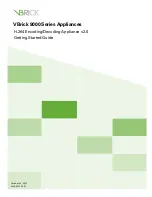With extensive listening several small problems with the first encoder were discovered.
Many (but not all) of these problems have been addressed in the new encoder. For
example, when stereo signals are applied to both the front and the rear terminals of the
encoder at the same time, the resulting encoder output is biased too far to the front. The
new encoder compensates for this effect by increasing the rear bias slightly. Likewise, we
have found that when a film is encoded with substantial surround content, there is a net
rearward bias which can tend to reduce the signal power of dialog in the center channel.
This can be important in a film, where dialog intelligibility is of paramount importance.
The new encoder compensates for this effect by raising the center channel input to the
encoder slightly under these conditions.
Explanation of the design:
The new encoder handles the left, center, and right signals identically to the previous
design and identically to the Dolby encoder, providing the center attenuation function fcn
is equal to 0.71, or -3dB.
The surround channels look more complicated than they are. The functions fc() and fs()
direct the surround channels either to a path with a 90 degree phase shift relative to the
front channels, or to a path with no phase shift. In the basic operation of the encoder fc is
one, and fs is zero - that is, only the path which uses the 90 degree phase shifts is active.
The value crx is typically 0.38. It controls the amount of negative cross feed for each
surround channel. As in the previous encoder, when there is only an input to one of the
surround channels the A and B outputs have an amplitude ratio of -.38/.91, which results
in a steering angle of 22.5 degrees to the rear. As usual, the total power in the two output
channels is unity - that is the sum of the squares of .91 and .38 is one.
While the output of this encoder is relatively simple when only one channel is driven, it
becomes problematic when both surround inputs are driven at the same time. If we drive
the LS and the RS input with the same signal (a common occurrence in film), all the
signals at the summing nodes are in phase, so the total level in each output channel is .38
+ .91 or 1.29. This output is too strong by the factor of 1.29, or 2.2 dB. Active circuitry is
included in the encoder to reduce the value of the function fc by up to 2.2 dB when the
two surround channels are similar in level and phase.
Another error occurs when the two surround channels are similar in level and out of
phase. In this case the two attenuation factors subtract, so the A and B outputs have equal
amplitude and phase, and a level of .91-.38, or .53. This signal will decode as a center
direction signal. This error is severe. The previous encoder design produced an unsteered
signal under these conditions, which is reasonable. It is not reasonable that signals
applied to the rear input terminals should result in a center oriented signal. Thus active
circuitry is supplied which increases the value of fs when the two rear channels are
similar in level and antiphase. The result of mixing both the real path and the phase


















